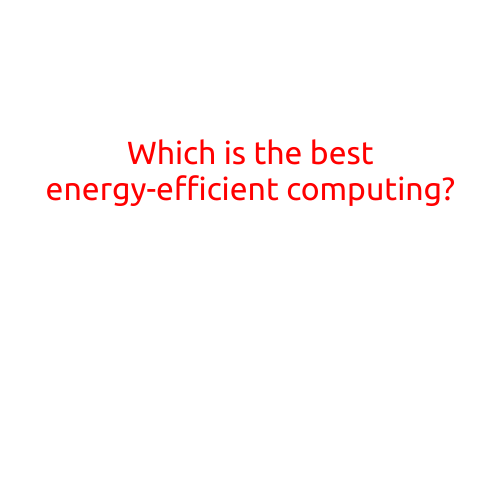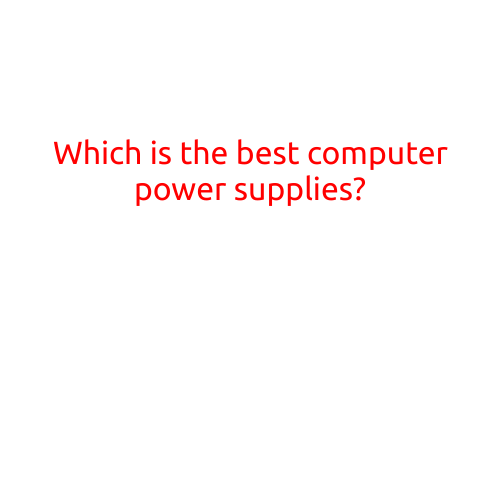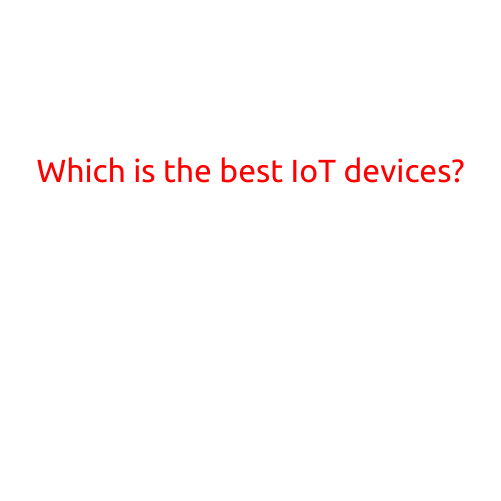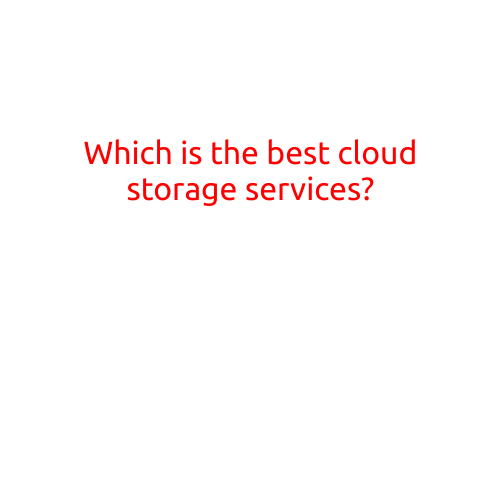
Which is the Best Energy-Efficient Computing?
In today’s digital age, energy efficiency has become a growing concern for individuals, businesses, and governments alike. As the demand for computing power increases, so does the need for sustainable and eco-friendly solutions. In this article, we’ll explore the best energy-efficient computing options available, helping you make an informed decision that balances your computing needs with environmental considerations.
1. Cloud Computing
Cloud computing is a decentralized model of computing that allows users to access and store data over the internet, rather than on local devices. This approach offers numerous benefits, including reduced energy consumption, lower carbon emissions, and increased scalability. Cloud providers such as Amazon Web Services (AWS), Microsoft Azure, and Google Cloud Platform (GCP) operate massive data centers that are designed to be energy-efficient.
2. Server Virtualization
Server virtualization is a technology that allows multiple virtual servers to run on a single physical server, increasing resource utilization and reducing energy consumption. This approach can save up to 80% of power consumption compared to traditional physical servers. VMWare, Hyper-V, and KVM are popular virtualization platforms that offer improved energy efficiency.
3. Hybrid Cloud
Hybrid cloud computing combines the benefits of public cloud computing with the security and control of private cloud computing. This approach allows organizations to store and process sensitive data internally while using public cloud services for non-sensitive tasks, reducing energy consumption and costs. Microsoft, AWS, and Google offer hybrid cloud solutions that integrate seamlessly with on-premises infrastructure.
4. Data Center Optimization
Data centers are significant consumers of energy, accounting for about 1.5% of global power consumption. Data center optimization involves implementing strategies to reduce energy consumption while maintaining or increasing computing power. THIS includes using energy-efficient hardware, optimizing cooling systems, and leveraging artificial intelligence (AI) to predict and adjust energy usage.
5. Energy-Efficient Hardware
The development of energy-efficient hardware is crucial in reducing the overall energy consumption of computing systems. Intel’s Core i7-9700K processor, for example, offers improved power management features, such as Dynamic Tuning, which can adjust clock speeds to conserve energy. AMD’s EPYC processors also offer optimized power management and reduced energy consumption.
6. GPU Computing
Graphics Processing Units (GPUs) are designed for compute-intensive tasks, such as artificial intelligence, machine learning, and cryptocurrency mining. Modern GPUs, like those from NVIDIA and AMD, offer significant energy-efficiency improvements compared to traditional CPUs. GPU computing can be used for a wide range of applications, from scientific research to gaming.
Conclusion
As the demand for computing power continues to grow, it’s essential to prioritize energy efficiency in our computing solutions. By adopting cloud computing, server virtualization, hybrid cloud, data center optimization, energy-efficient hardware, and GPU computing, we can reduce energy consumption, lower carbon emissions, and support a sustainable future.
Whether you’re an individual or an organization, understanding the best energy-efficient computing options available will help you make informed decisions that balance your computing needs with environmental considerations. Together, we can create a more sustainable digital landscape.





